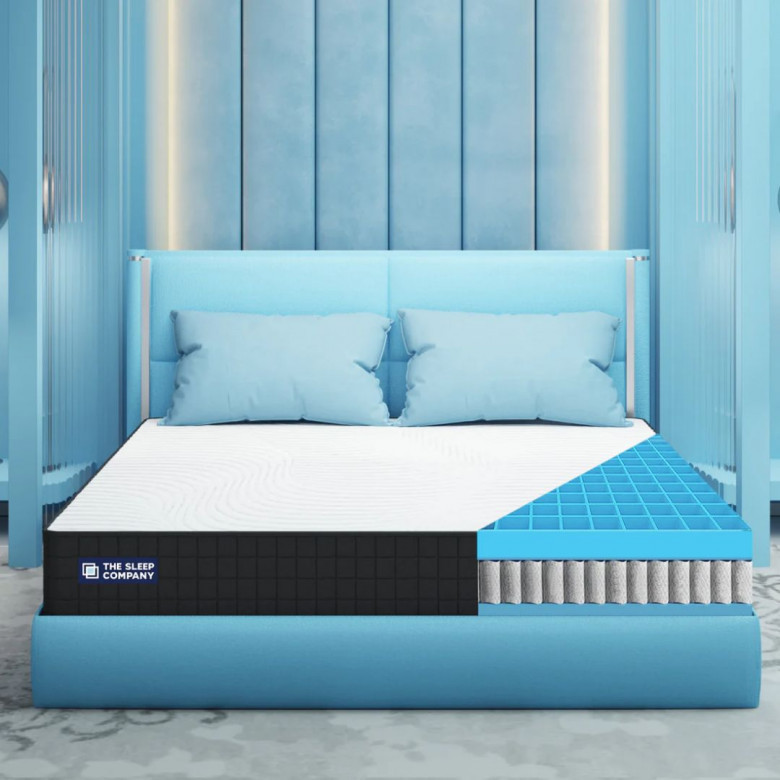views
The classic spring mattress has been a staple in bedrooms for over a century. Known for its durability, bounce, and support, it remains a popular choice worldwide. But as sleep science advances and consumer needs become more sophisticated, spring mattress designs are undergoing a significant transformation. Today’s spring mattresses are not the same as the rigid, squeaky versions of the past. Modern designs incorporate advanced materials, ergonomic zoning, and hybrid technologies that aim to deliver enhanced comfort, support, and sleep quality.
Let’s explore how spring mattress designs are evolving to meet the demands of today’s sleepers.
1. From Open Coil to Pocket Springs
Traditionally, spring mattresses featured open coil systems—interconnected coils that move as a unit. While these were affordable and durable, they lacked personalized support and caused significant motion transfer.
The modern shift:
-
Pocket springs or individually wrapped coils are now the standard in premium mattresses.
-
Each coil operates independently, allowing better body contouring and targeted support.
-
Motion transfer is greatly reduced, making them ideal for couples.
This transition allows for a more customized sleep experience, where each part of the body receives the precise amount of support it needs.
2. Zoned Support Systems
One of the most impactful innovations in spring mattresses is the introduction of zoned support systems.
What is zoned support?
-
The mattress is divided into different zones—typically 3 to 7—each with varying coil tension.
-
Firmer zones are placed under the hips and lower back for spinal support.
-
Softer zones cradle the shoulders and legs, reducing pressure points.
This design ensures spinal alignment and can greatly improve comfort for side and back sleepers. Zoned spring systems address a major limitation of older designs, which offered uniform support regardless of body part.
3. Hybrid Mattress Evolution
Today’s top-tier spring mattresses are often hybrid designs, combining traditional coils with modern materials like:
-
Memory foam
-
Gel-infused foam
-
Natural latex
-
Cool-touch fabric layers
These hybrid mattresses provide the resilience and bounce of springs along with the pressure relief and contouring of foam or latex. This fusion caters to a wider range of sleepers and offers benefits like:
-
Improved motion isolation
-
Better temperature regulation
-
Adaptive comfort layers

4. Advanced Coil Materials and Shapes
Spring technology itself is becoming more sophisticated. Manufacturers are experimenting with different coil materials and shapes to optimize performance.
Examples include:
-
Titanium or tempered steel coils for greater durability
-
Dual-gauge coils within the same spring for adaptive support
-
Hourglass-shaped or offset coils that compress at different rates depending on pressure
These innovations improve the longevity, resilience, and ergonomics of spring mattresses.
5. Eco-Friendly and Sustainable Designs
With growing environmental consciousness, many brands are revamping spring mattress construction to be more eco-friendly:
-
Using recycled steel for coils
-
Incorporating organic cotton, natural latex, and plant-based foams
-
Designing mattresses that are recyclable at end-of-life
Spring mattresses have the advantage of being less reliant on petroleum-based foams, making them a greener choice when paired with sustainable materials.
6. Smart Integration and Customization
Technology is increasingly influencing mattress design. Some brands are adding smart features to spring mattresses, including:
-
Adjustable firmness zones via air or mechanical systems
-
Sleep tracking sensors embedded in the comfort layers
-
Dual comfort systems for couples with different sleep preferences
While these features are still emerging, they represent the next generation of personalized sleep experiences, even in traditionally manual spring mattresses.
7. Enhanced Edge Support
Earlier spring mattresses often sagged at the edges, reducing usable sleep surface and making it harder to get in and out of bed.
Today’s solution:
-
Reinforced edge coils or foam encasements strengthen perimeter support.
-
Allows consistent support across the mattress surface.
-
Ideal for people who share a bed or prefer to sleep near the edge.
This improvement increases both comfort and durability.
8. Aesthetic and Structural Refinements
Today’s spring mattresses aren’t just functional—they’re designed to look and feel luxurious:
-
Quilted euro tops and pillow tops add plush comfort
-
Cooling covers and anti-microbial fabrics improve hygiene
-
Sleek, box-top designs give a premium appearance
Even the inner structure is fine-tuned for minimal noise, better airflow, and fewer pressure points.
Conclusion: Tradition Meets Innovation
Spring mattresses have come a long way from their humble beginnings. What was once a simple network of metal coils has now evolved into a highly engineered sleep system that blends tradition with innovation. Today’s spring mattresses are:
-
More adaptive to body types and sleeping styles
-
Better at isolating motion and relieving pressure
-
Built with sustainable, breathable materials
-
Smarter, more customizable, and aesthetically pleasing
If you’re considering a spring mattress upgrade, don’t overlook spring mattresses. With their modern enhancements, they offer an excellent blend of support, comfort, and value, making them a timeless yet forward-looking choice in today’s diverse mattress market.



Comments
0 comment